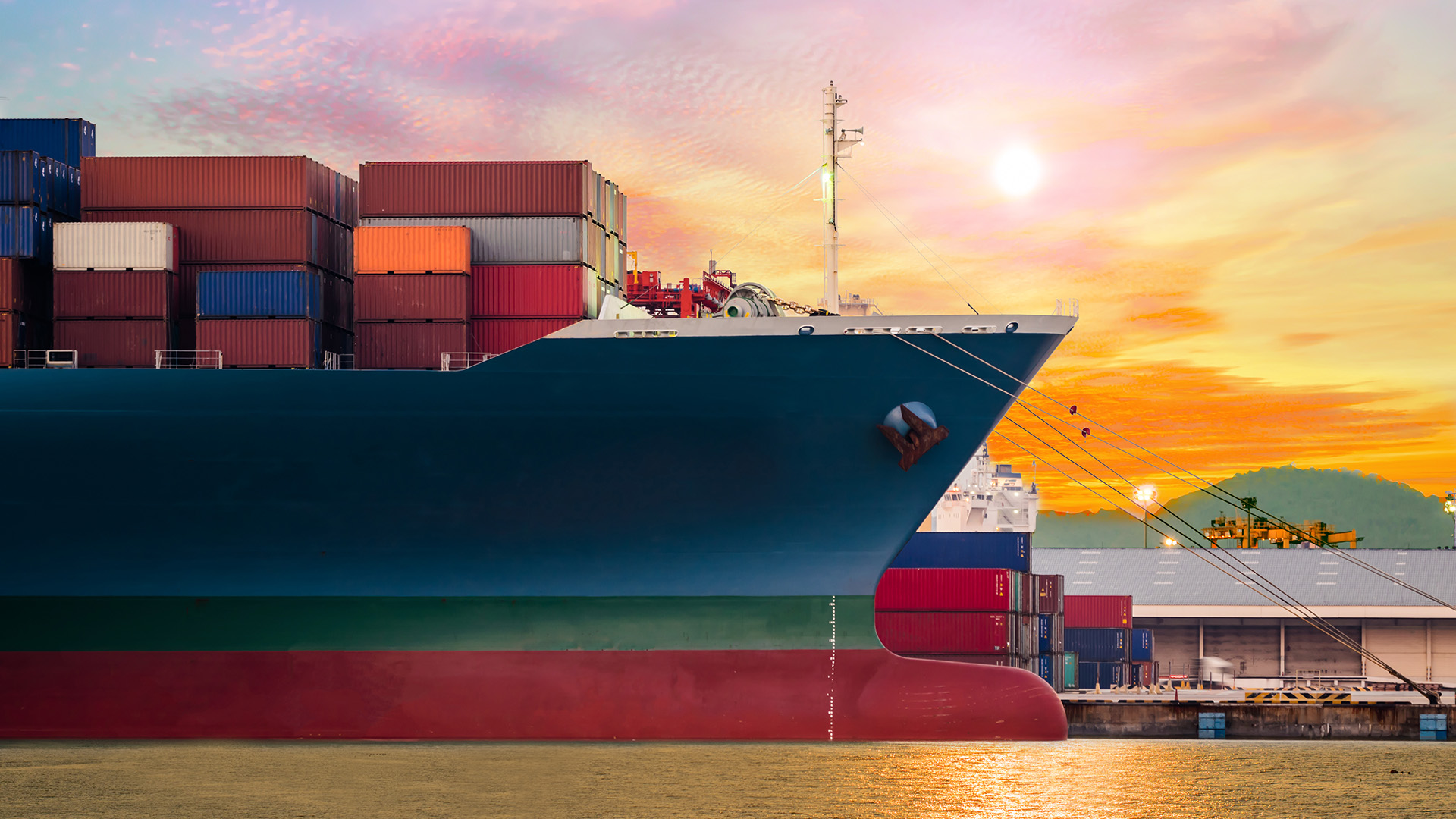What if you could see every part of your fleet’s operation in one clear picture? The maritime shipping industry faces growing demands for efficiency, safety, and compliance. Fleet wide data collection solutions are key to meeting these challenges head on. In this article, we explore how integrating operational data across vessels boosts efficiency, enhances vessel health monitoring, and sharpens predictive analytics. You will learn how automated reporting and compliance management reduce risks, cut downtime, and support better decisions for the entire fleet.
What are the real-world impacts of fleet wide data collection solutions in shipping?
The maritime shipping industry relies on clear, actionable data to keep fleets safe, efficient, and compliant. Fleet wide data collection solutions reshape how shipping companies manage their daily operations. When systems like these are in place, they deliver powerful impacts across the fleet, empowering operators, supporting crews, and enhancing performance at every level.
Operational efficiency
With high-frequency data automatically gathered from onboard sensors, shipowners and operators can spot inefficiencies as they happen. Small shifts in fuel use, route deviation, or machinery health are identified early, allowing quick adjustments. This direct line of sight reduces delays and cuts unnecessary costs, keeping the operation lean and responsive.
Vessel health monitoring and predictive analytics
Continuous monitoring of machinery, engines, and auxiliary systems means trends are detected before they turn into costly breakdowns. Predictive analytics uses this data to anticipate equipment wear or potential failures, giving crews time to plan maintenance without unscheduled downtime or last minute scrambling.
Danelec Collect supports up to 250 data tags, making it easy to track every critical parameter relevant for vessel health and operational insight.
Automated reporting and compliance management
Manual logbooks and paperwork create room for human error and slow down reporting. By switching to automated data collection, compliance and reporting accuracy reach new levels. Reports on emissions, fuel consumption, and voyages are generated directly from sensor data, reducing both administrative workload and the risk of mistakes.
Automatic audits and data trails, preserved securely onboard, simplify regulatory inspections and strengthen credibility with authorities, ensuring clear, consistent compliance.
Impact on crew workload and decision-making efficiency
Data-driven solutions free up the crew's time so they can focus on safe navigation and problem-solving instead of logging or sifting through information. Insights and alerts are delivered in real time, giving decision makers both onboard and ashore the support they need to act quickly and confidently.
By integrating with shore based systems, and using compressed transmissions to keep data costs low, as seen in the capabilities of Danelec Collect, decision makers have a full operational picture. This shared awareness accelerates actions and underpins smarter choices across the fleet.
Fleet wide data collection solutions are enablers, not barriers. They make it possible to minimize downtime, cut manual mistakes, and turn regulatory requirements from a box ticking exercise into a robust, repeatable process. The result is a more resilient shipping operation, where operational efficiency, proactive vessel monitoring, automated reporting, and compliance all work together for better outcomes at sea and on shore.
How does centralized data empower actionable insights for maritime decision-makers?
Centralizing fleet and vessel data is transformative for the maritime shipping industry. When all operational information flows through one secure source, maritime decision makers gain real time visibility into each ship, unlocking true actionable insights. Insights derived from data centralization directly support data driven decisions, fast issue response, and efficient fleet utilization.
Top management and onshore teams can benchmark performance across ships, compare against fleet averages, and see accurate trends as they emerge. KPI benchmarking becomes both reliable and continuous, enabling leaders to review fuel consumption, machinery health, voyage performance, and regulatory compliance side by side. This clarity gives operators the confidence to adjust operations quickly, proactively manage risks, and seize opportunities for improvement.
How does data centralization reduce information silos in shipping operations?
Traditional shipping operations face siloed information, engineers, bridge officers, and onshore operations each hold partial datasets. When data streams from bridge equipment, engine sensors, and environmental monitors are captured and aggregated in a single onboard platform, like Danelec Collect’s Vessel Remote Server, information silos disappear.
- Everyone sees the same timely, reliable data.
- Crewmembers, fleet managers, and sustainability officers get a shared operating picture.
- Decision cycles shrink, because people collaborate around facts, not guesses.
Central data flow enables cross functional teams to align goals for operational efficiency, emissions reporting, and predictive maintenance.
What types of KPIs can be enhanced through centralized data collection?
Centralized data collection lifts KPI benchmarking to a new level. Key areas that benefit include:
- Fuel efficiency per voyage and by vessel type
- Machinery health and predictive maintenance triggers
- Emissions performance and compliance with tightening regulations
- Operational efficiency metrics like port turnaround time and speed deviation
- Safety incident reporting and risk assessment
With up to 250 data tags supported and easy configurability, Danelec Collect lets fleet operators tailor KPI dashboards for each ship or the whole fleet.
How does real-time fleet visibility impact operational response and planning?
With real time fleet visibility, fleet operators move from reacting to incidents after the fact to managing them as they develop. Shipping companies can:
- Detect anomalies, like engine wear or unexpected fuel spikes, as they happen
- Issue immediate instructions to vessels for route changes, speed optimization, or preventive checks
- Dynamically adjust plans to reduce fuel consumption, improve safety, and avoid costly delays
By transmitting high frequency, compressed data securely from ship to shore, solutions such as Danelec Collect enable actionable fleet wide analytics. This fosters immediate, informed decisions on everything from voyage planning to regulatory reporting, helping maritime professionals operate with clarity, agility, and confidence.
What are the best practices for successful implementation of fleet wide data collection solutions?
Clear planning and purposeful execution are critical to ensure your data initiative yields long term results. Start by building an integration strategy that aligns with your operational goals and current vessel infrastructure. Identify which systems and data sources add tangible value to your workflows, and aim for scalable choices that grow with your fleet.
Prioritize system interoperability so your solution connects smoothly with existing onboard equipment as well as shore based systems. This reduces manual interventions, prevents siloed information, and unlocks real time operational insights shipping professionals need for confident decision making.
A robust data quality plan is essential from day one. Ensure the configuration of your data capture is precise, using a platform like Danelec Collect allows up to 250 data tags, fully configurable for each vessel’s needs and supporting advanced data compression to keep satellite costs under control.
Engage your crews early through targeted crew training. Upskill officers and engineers to understand digital workflows, recognize data value, and use analytic outputs in daily decision making. Practical, hands on sessions, combined with accessible support materials, help reduce resistance and enable faster adoption across diverse vessel types and crew compositions.
Make scalability a non negotiable. Choose platforms and hardware that are easy to upgrade and expand as your operations grow. For example, Danelec Collect’s central Vessel Remote Server architecture aggregates a wide range of analog, digital, or serial sensor data, and supports seamless integration with third party systems via API, so your digital foundation stays flexible as technology advances.
Throughout deployment, implement safeguards like cyber secure interfaces and firewalls to protect the integrity of vessel and voyage data. Schedule regular audits and use automated validation to maintain accuracy and compliance with maritime regulations and internal KPIs.
How should shipping companies approach planning for digital fleet integration?
- Define clear objectives: Whether targeting regulatory compliance, vessel performance monitoring, or emissions reporting
- Map current assets and data flows for a realistic integration strategy
- Involve key personnel early to ensure buy in across technical and operational departments
- Prioritize interoperability with fuel consumption monitoring, automated reporting, and real time tracking systems already in place
How can crew training and change management maximize solution adoption?
- Deliver training focused on practical, daily applications (not just technical theory)
- Empower crews with self help guides and direct access to support
- Foster a culture of open feedback and continuous improvement for digital processes
- Recognize early adopters and champions to drive peer learning
What safeguards ensure data remains accurate, reliable, and scalable for future needs?
- Implement automated data validation and alarm systems for anomalies
- Schedule routine quality checks and periodic recalibration of sensors
- Ensure cyber resilience with layers of security at every data interface
- Regularly review and update data collection policies as your fleet evolves
By grounding new digital solutions in integration strategy, crew empowerment, robust data processes, and scalability, maritime leaders set up their operations for long term digital success and fleet optimization.
Conclusion
Looking back, integrating fleet wide data collection solutions fundamentally changes how we manage shipping operations. By improving operational efficiency, enabling real time vessel health monitoring, and delivering predictive analytics, these systems make a real difference in daily fleet performance. Automated reporting and enhanced compliance management not only reduce manual errors but also free crews to focus on more strategic, value added tasks.
Centralizing data gives decision makers clear, actionable insights that break down information silos and bring transparency across the entire fleet. Benchmarking key performance indicators and gaining real time visibility create a feedback loop that helps shipping companies respond faster, plan better, and maintain regulatory compliance with less friction.
Successfully implementing these solutions depends on thoughtful integration strategies, thorough crew training, and a commitment to data quality and system interoperability. These elements ensure scalability and long term value as fleets grow and evolve.
Embracing a robust, data driven approach is no longer optional, it’s essential to maritime success. How we harness data today will define tomorrow’s fleet performance and sustainability. Asking the right questions now will set the course for smarter, safer shipping in the years ahead.




